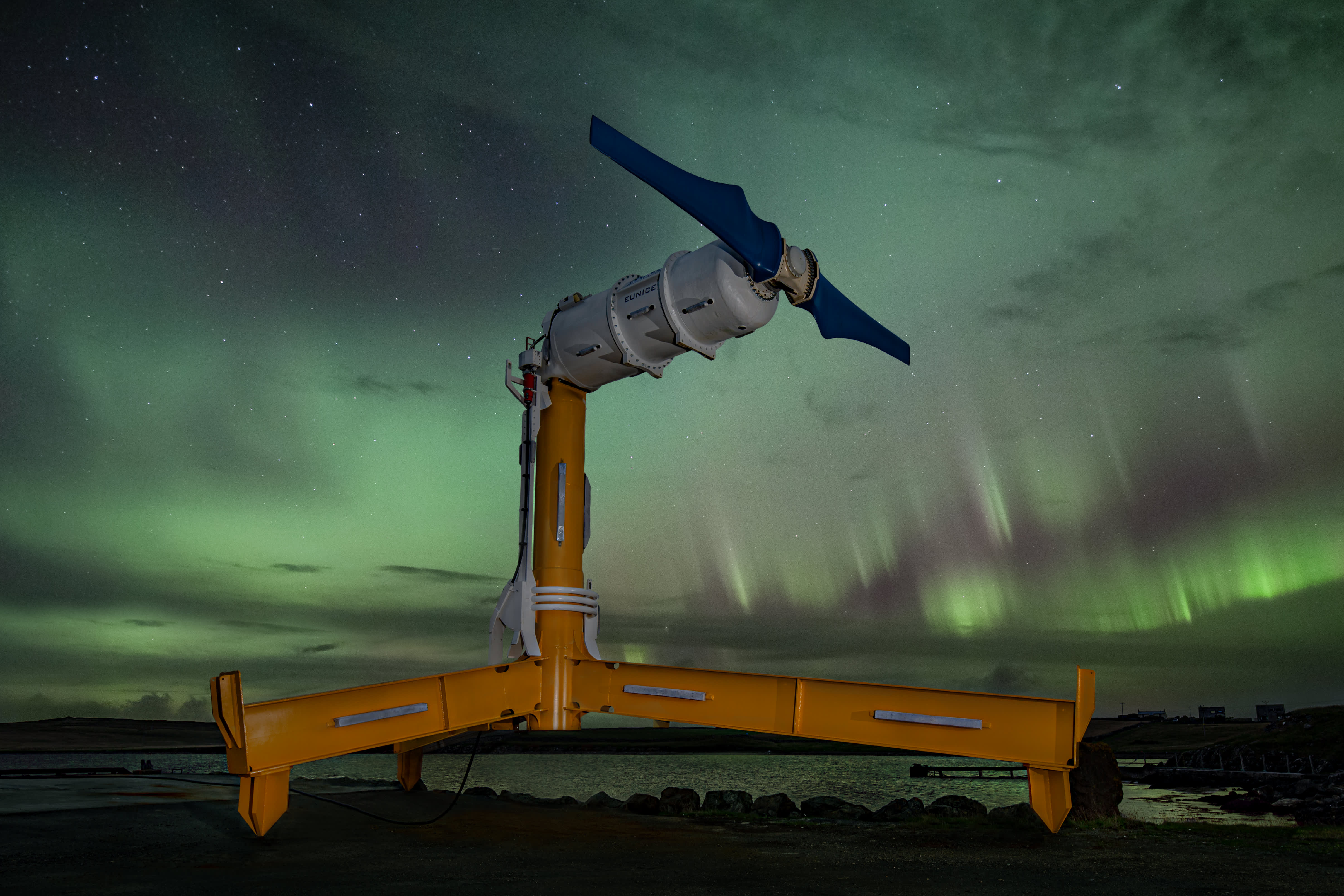Tidal energy business Nova Innovation has said it is able to move forward with a project centered around scaling up the production of tidal turbines after receiving funding from the Scottish government.
The £2 million ($2.78 million) funding boost, announced Thursday, will be used to support the company’s Volume Manufacturing and Logistics for Tidal Energy project, also known as VOLT.
VOLT will “develop the first European assembly line to mass manufacture tidal turbines,” according to Nova, and also “trial innovative techniques and tools to ship, deploy and monitor turbines around the world.”
The project will also study how turbine performance can be improved and focus on logistics linked to mass manufacturing, among other things.
The scale of the technologies and systems being deployed can be significant. Nova Innovation, for instance, has installed a number of turbines in waters off Shetland, an archipelago north of mainland Scotland. When the tip of their blades is vertical, the height from their base comes in at a little under 14 meters.
Thursday’s news comes just over a week after another company, Orbital Marine Power, said its O2 turbine had started grid-connected power generation at the European Marine Energy Centre in Orkney, another archipelago north of the Scottish mainland.
The 2-megawatt O2 has been dubbed “the world’s most powerful tidal turbine”, weighs 680 metric tons and is 74 meters long.
Michael Matheson, the Scottish government’s cabinet secretary for net zero, energy and transport, said the VOLT project marked “an important milestone in commercialising the sector.”
“With our abundant natural resources and expertise, Scotland is ideally-placed to harness the enormous global market for marine energy whilst helping deliver a net-zero economy both here and across the world,” he said in a statement Thursday. The funding will be delivered via Scottish Enterprise, the country’s economic development agency.
Marine energy’s potential
With miles of coastline, the U.K. as a whole is home to a number of projects related to marine energy.
In April, it was announced that a year-long research project focusing on the potential of tidal, wave and floating wind technology had secured support from Marine-i, a program centered around innovation in areas such as marine energy.
The project will be based on the Isles of Scilly, an archipelago located off the southwest coast of England, and led by Isles of Scilly Community Venture, Planet A Energy and Waves4Power.
There’s also potential when it comes to rivers. Back in March, the Port of London Authority gave the go ahead for trials of tidal energy technology on a section of the River Thames, a move which could eventually help to decarbonize operations connected to the river.
While interest in the marine energy sector appears to be growing, its current footprint remains small.
Figures from Ocean Energy Europe show that only 260 kilowatts of tidal stream capacity was added in Europe last year, while just 200 kW of wave energy was installed.
By contrast, 2020 saw 14.7 gigawatts of wind energy capacity installed in Europe, according to industry body WindEurope.
